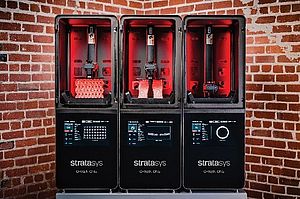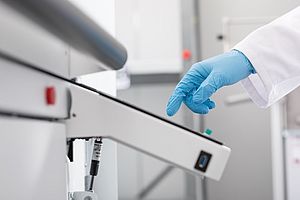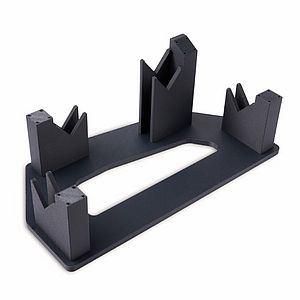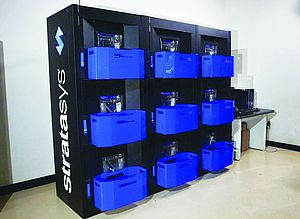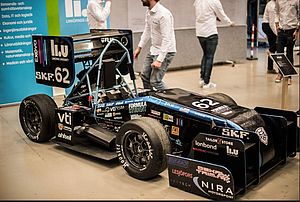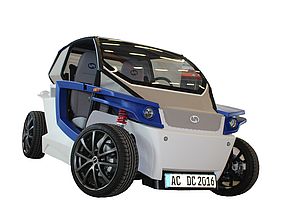Founded in Seville, Spain in 1979, Indaero began its journey making signage and labelling for a diverse number of industries. Several years later, the company made its foray into the aerospace sector following its work for key customer and world-leading manufacturer, Airbus, thereby establishing itself as an engineering and manufacturing specialist. Teaming up with welding partner, Unilaser, the companies embarked on a shared vision to exploit a gap in the market and in 2015 created a joint venture – EBAS Avio Panels – a new company dedicated to the manufacture of aircraft panels.
Today, the company provides a comprehensive service offering – including design, engineering, tooling, welding and painting of complex tooling and structures. However, according to Darío González Fernández, Indaero CEO, this was not always the case and it is the rapid adoption of new technologies and processes that has enabled them to pull away from the competition.
“As we established ourselves in the aerospace industry, we had two core objectives. Firstly, we knew we had to improve our long-term strategy to strengthen our position for the next ten years, and secondly, to maintain a competitive edge it was essential that we optimize our service offering for key customers, such as Airbus. With much of the competition limited to only a few services, we decided to invest in Stratasys additive manufacturing to not only enhance our existing processes, but also extend into new tooling applications to further differentiate ourselves as an end-to-end design to production service.”
Additive manufacturing opens door to low-volume production
The company purchased an FDM-based Stratasys Fortus 450mc Production 3D Printer from Stratasys’ local reseller, Comher. According to González, the 3D printing materials available on the system were crucial to enabling them to meet key customer specifications. “It has become an integral part of our production process, as it is certified for aerospace and well known by our customer Airbus for a number of aircraft applications. With its unique combination of high strength-to-weight ratio and FST (flame, smoke, and toxicity) certification, we can 3D print robust, lightweight tools and respond to short run production of flying parts if required – giving us a unique advantage versus competition,” he explains.
“Aerospace is unlike other industries producing high volumes of tools,” continues González. “To traditionally manufacture production tools, injection molding or CNC machining would be used, but this would be very time-consuming and costly. With our Fortus 450mc 3D Printer, we can service low-volume production quickly and cost-effectively, producing many different tools on-demand to accelerate the manufacturing process and ensure we meet customer delivery deadlines.”
Complex ‘curved’ 3D printed tools leads to increased business
The Fortus 450mc Production 3D Printer is used by Indaero to manufacture a wide range of production tools. Crucial to achieving this is the ability to quickly design and produce complex curved geometries that perfectly fit the intricate shapes of the aircraft panels. Previously, the company was limited to producing flat shapes with traditional methods, which affected the performance of the final tool during affixation to the panel by workers.
“The 3D printer has been a game-changer for us,” says González. “The ability to 3D print curved production tools in robust materials made us realize the importance of having tools that perfectly fit the panels. Not only does it make the work of our operators much easier, it frees up resources and increases our overall productivity. This improvement was immediately recognized by a number of leading Airbus providers such as Aernnova, who previously worked with our competitors and whose business we have subsequently secured.”
This was exemplified in recent a project for Aernnova, whereby Indaero used its Fortus 450mc 3D Printer to optimize a series of production tools for the manufacture of an Airbus NH90 Helicopter. When traditionally developing a manufacturing tool to fix a slide box onto the interior panel of the helicopter wing, Indaero would produce a tool from aluminum. Weighing twelve kilos, the tool required two operators to hold it against the panel while marking the drill holes. With the complex geometries achievable with 3D printing, the team redesigned the tool with a curvature perfectly fitting the panel structure, enabling them to leverage center of gravity to produce a tool capable of standing on its own with the help of two aluminum bars. As a result, Indaero provided Aernnova with a new, more effective tool, nine kilos lighter than its predecessor.
“Integrating FDM 3D printing within production tooling for this project delivered several clear benefits,” explains González. “Firstly, from a resource perspective there is now no need for two operators as the tool fits against the panel independently – leaving one operator to position the slide box with both free hands. Secondly, we can produce a lightweight and robust tool 66% faster than with CNC machining. As a result, this part of the project was completed ahead of time and subsequently led to a reduction in manufacturing cost by over 50%. The customer response has been fantastic.”
With the deployment of additive manufacturing for lightweight, complex tools, the company has developed a unique competitive advantage in the aerospace industry and continues to increase its tooling capabilities to accelerate the production process. González concludes: “The future is bright. We are excited to explore how we can further leverage our Stratasys additive manufacturing system to respond to new engineering challenges our customers face.”









